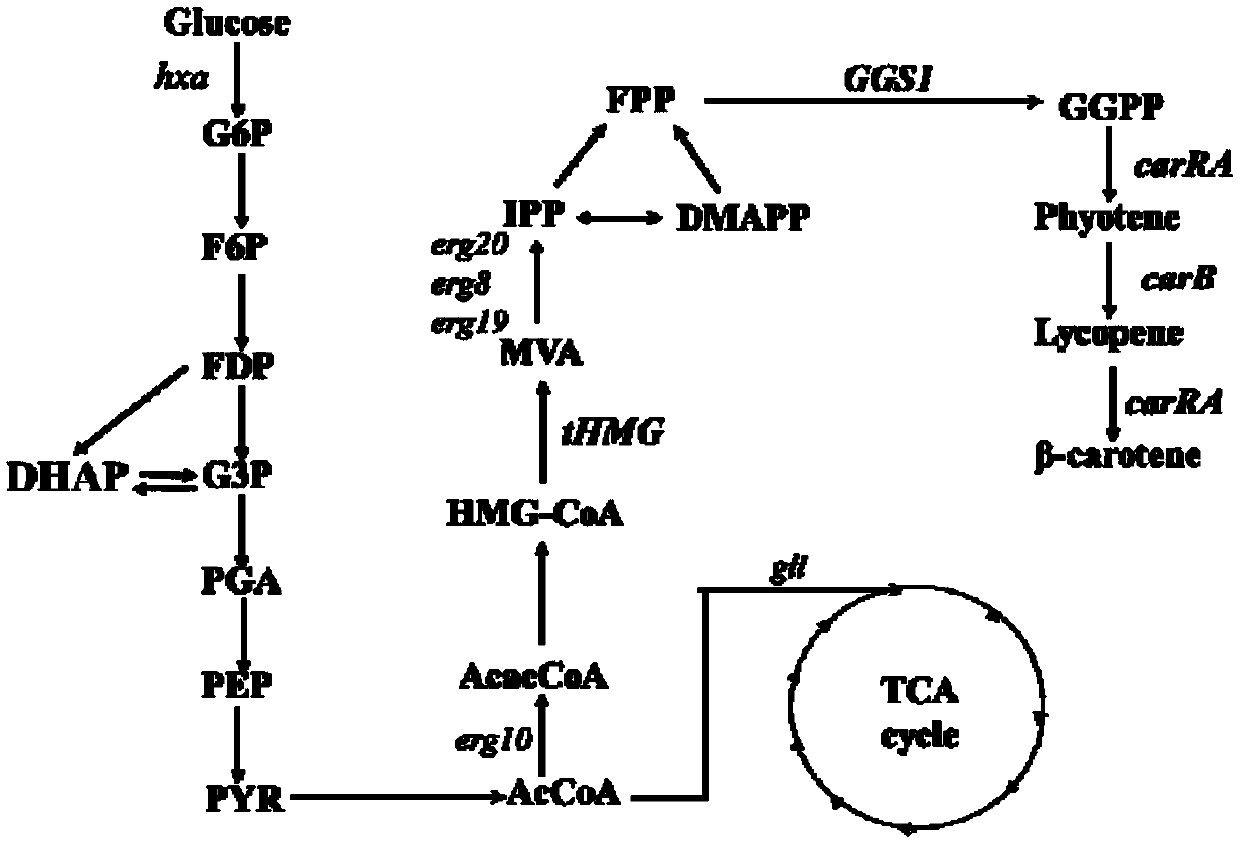Recombinant bacteria used for producing beta-carotene and construction method utilizing Crispr-Cas9 technology
A technology of carotene and recombinant bacteria, applied in the field of metabolic engineering and combinatorial biology, can solve the problems of low yield, long time-consuming, and low efficiency of molecular technology
- Summary
- Abstract
- Description
- Claims
- Application Information
AI Technical Summary
Problems solved by technology
Method used
Image
Examples
Embodiment 1
[0078] according to figure 1 The β-carotene biosynthesis pathway in Yarrowia lipolytica is shown, and the recombinant bacteria producing β-carotene is constructed, and the specific construction method is as follows:
[0079] 1. Knockout of ku70 gene in Yarrowia lipolytica
[0080] Using the gene of Yarrowia lipolytica Po1f as the template, the primers were designed according to the principle of overlapping extension PCR primer design, using primers ku70-up-F and ku70-up-R, the upstream homology arm of ku70 was amplified by fidelity enzyme pfu PCR (800bp), PCR amplification system: 5×FastPfu Buffer 10μL, ku70-up-F (10μM) 1μL, ku70-up-R (10μM) 1μL, 2.5mM dNTPs 4μL, Po1f gene 1μL, FastPfu DNA Polymerase 1μL, ddH 2 O 32μL; using primers ku70-down-F and ku70-down-R, PCR amplification of the downstream homology arm (800bp) of ku70 with fidelity enzyme pfu, PCR amplification system: 5×FastPfu Buffer 10μL, ku70-down -F (10μM) 1μL, ku70-down-R (10μM) 1μL, 2.5mM dNTPs 4μL, Po1f gene 1...
PUM
 Login to View More
Login to View More Abstract
Description
Claims
Application Information
 Login to View More
Login to View More - R&D
- Intellectual Property
- Life Sciences
- Materials
- Tech Scout
- Unparalleled Data Quality
- Higher Quality Content
- 60% Fewer Hallucinations
Browse by: Latest US Patents, China's latest patents, Technical Efficacy Thesaurus, Application Domain, Technology Topic, Popular Technical Reports.
© 2025 PatSnap. All rights reserved.Legal|Privacy policy|Modern Slavery Act Transparency Statement|Sitemap|About US| Contact US: help@patsnap.com

